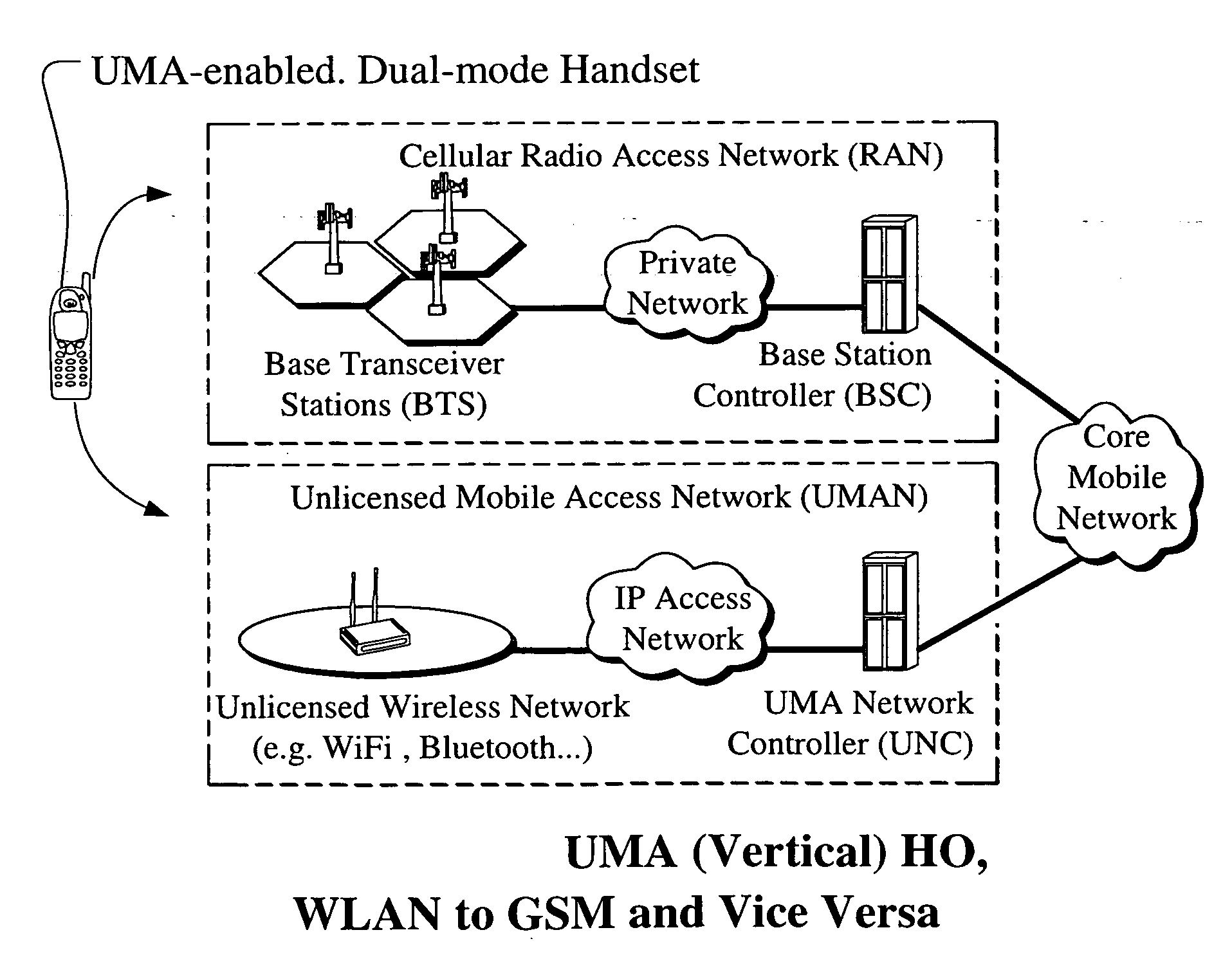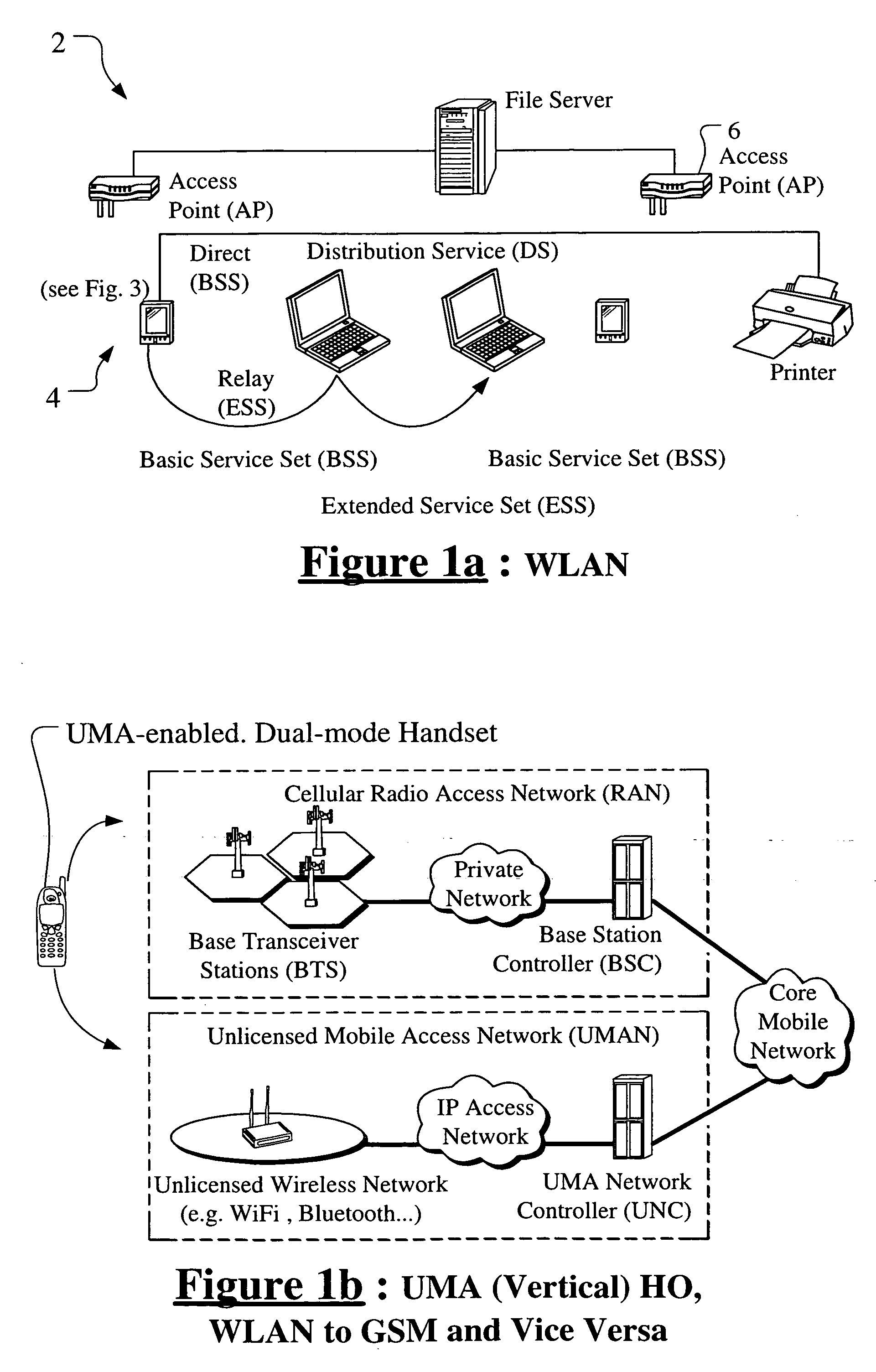Co-existence management of multiple radios
a technology of coexistence management and radios, applied in the field of wireless network environment, can solve problems such as bluetooth® and wlan radios in one product, network may not be appropriate for all data applications, and significant impairment of uma data transfer
- Summary
- Abstract
- Description
- Claims
- Application Information
AI Technical Summary
Benefits of technology
Problems solved by technology
Method used
Image
Examples
Embodiment Construction
[0042]FIG. 1 shows, by way of example, a wireless network according to the present invention in the form of an IEEE 802.11 WLAN system, generally indicated as 2, which provides for communications between communications equipment such as mobile and secondary devices generally indicated as 4, including personal digital assistants 4a (PDAs), laptops 4b and printers 4c, etc. The WLAN system 2 may be connected to a wired LAN system that allows wireless devices to access information and files on a file server or other suitable device or connecting to the Internet. The devices can communicate directly with each other in the absence of a base station in a so-called “ad-hoc” network, or they can communicate through a base station, called an access point (AP) in IEEE 802.11 terminology, generally indicated as 6, with distributed services through the AP 2 using local distributed services (DS) or wide area extended services, as shown. In a WLAN system, end user access devices are known as stati...
PUM
 Login to View More
Login to View More Abstract
Description
Claims
Application Information
 Login to View More
Login to View More - R&D
- Intellectual Property
- Life Sciences
- Materials
- Tech Scout
- Unparalleled Data Quality
- Higher Quality Content
- 60% Fewer Hallucinations
Browse by: Latest US Patents, China's latest patents, Technical Efficacy Thesaurus, Application Domain, Technology Topic, Popular Technical Reports.
© 2025 PatSnap. All rights reserved.Legal|Privacy policy|Modern Slavery Act Transparency Statement|Sitemap|About US| Contact US: help@patsnap.com



